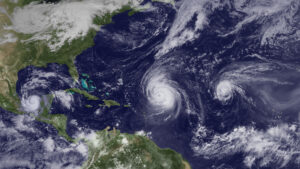 West Florida Electric Cooperative is seeking requests for the upcoming storm season. The potential proposals include Disaster Debris Clearance and Removal Services, Disaster Debris Monitoring Services, Base Camp and Logistics Services, and Emergency Power Restoration Services. Most proposals are due in March, so be sure to research and complete the relevant proposal(s) as soon as possible. Visit the Requests for Proposals: Emergency Services webpage for detailed information on each proposal.
West Florida Electric Cooperative is seeking requests for the upcoming storm season. The potential proposals include Disaster Debris Clearance and Removal Services, Disaster Debris Monitoring Services, Base Camp and Logistics Services, and Emergency Power Restoration Services. Most proposals are due in March, so be sure to research and complete the relevant proposal(s) as soon as possible. Visit the Requests for Proposals: Emergency Services webpage for detailed information on each proposal.
The Players Gold Standard Golf Tournament
The Players Gold Standard Gold Tournament starts tomorrow and runs until March 13th.

Held at the TPC Sawgrass’ 17-hole green, this is one of the most well-attended golf tournaments in Ponte Vedra Beach. The tournament features local restaurants such as the Local in the Food Court and Silkie’s Chicken & Champagne Bar in Taste of JAX. Ticket MUST be purchased online at THEPLAYERS.COM/tickets – children under 15 years old are free to attend with the purchase of a ticket. The tournament will also have autograph opportunities, a concert, bleachers, and a kid’s zone.
Dentist Day
 Today is National Dentist Day! In honor of this annual celebration of oral health, today’s blog is highlighting a local dentist’s office: Jeremy Lewis, DMD. Located in Marianna, Lewis’ office is a general and family dentistry practice – perfect for the whole family! Open Monday through Thursday, the office offers services ranging from teeth whitening to dental implants. Visit the Jeremy Lewis official website to learn more about their services, view their staff profiles, or schedule an appointment.
Today is National Dentist Day! In honor of this annual celebration of oral health, today’s blog is highlighting a local dentist’s office: Jeremy Lewis, DMD. Located in Marianna, Lewis’ office is a general and family dentistry practice – perfect for the whole family! Open Monday through Thursday, the office offers services ranging from teeth whitening to dental implants. Visit the Jeremy Lewis official website to learn more about their services, view their staff profiles, or schedule an appointment.
The Amelia: Automobile Show
Formerly known as the Amelia Island Concours D’Elegance, The Amelia is an annual beauty pageant for restored automobiles.

This year’s show includes a new Cars & Community series of events, the renamed Cars & Caffeine, a RADwood display, a new Kids Zone, and the cheeky Concours d’Lemons. The Concours d’Lemons is cheekily designed to allow owners to show off their ugliest, saddest vehicles. The event will be held March 3rd-6th and culminates Sunday with a chance to walk among beautiful cars parked on the fairways of the Ritz-Carlton Amelia Island’s beachfront golf course. Learn more at the newly designed Amelia website.
Panama City Beach Scottish Festival
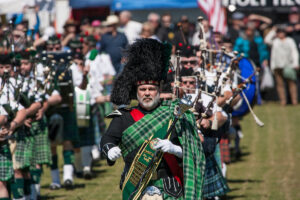
Tomorrow is the Panama City Beach Scottish Festival. This one-day event is hosted by the Celtic Cultural Alliance and held at Frank Brown Park. The event includes Highland Games, premium scotch whisky tasting, Irish Step dancing performances, a British car show, Scottish Bagpipe bands, kids play area, and vendors selling Celtic-inspired goods. The Highland Games include a Stone Throw, Scottish Heavy Hammer Throw, and the Sheaf Toss. Tickets are $25 for adults, $10 for kids aged 6-14, and free for children 5 and younger. Please note that the premium scotch whisky tasting requires a special ticket costing $35. Learn more about the Scottish Festival and the Celtic Cultural Alliance by visiting their website here.
Chipley Craft Fair
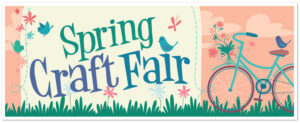 Coming to Chipley this Saturday, March 5th, is the Boat Lake Spring Craft Fair and Yard Sale. From 9am – 5pm, this free event will be hosting a multitude of vendors selling a variety of crafts and goods. If you or someone you know is interested in taking part as a vendor, booth spots are $10.00 per booth spot with set-up beginning at 8am. To sign up as a vendor or to learn more about the event, please call 850-832-4771 or email boatlakedirector@gmail.com. Visit the Facebook event page here to stay up-to-date with event announcements.
Coming to Chipley this Saturday, March 5th, is the Boat Lake Spring Craft Fair and Yard Sale. From 9am – 5pm, this free event will be hosting a multitude of vendors selling a variety of crafts and goods. If you or someone you know is interested in taking part as a vendor, booth spots are $10.00 per booth spot with set-up beginning at 8am. To sign up as a vendor or to learn more about the event, please call 850-832-4771 or email boatlakedirector@gmail.com. Visit the Facebook event page here to stay up-to-date with event announcements.
State of Florida Speciality Plate
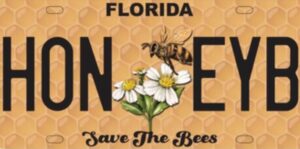 The State of Florida is giving car owners a special opportunity to help save the bees by pre-ordering a license plate! The annual use fees from the sale of the Florida State Beekeepers license plate will be distributed to the Florida State Beekeepers Association. The money will be put towards funding outreach and education to raise awareness of the importance of beekeeping to Florida agriculture. Additionally, the funds will help honeybee research and husbandry. The State has until October 2022 to get 3,000 pre-orders for the license plate to become a reality. Please pre-order yours today at the following link for $40: https://myfloridaspecialtyplate.com/beesvoucherorder.html
The State of Florida is giving car owners a special opportunity to help save the bees by pre-ordering a license plate! The annual use fees from the sale of the Florida State Beekeepers license plate will be distributed to the Florida State Beekeepers Association. The money will be put towards funding outreach and education to raise awareness of the importance of beekeeping to Florida agriculture. Additionally, the funds will help honeybee research and husbandry. The State has until October 2022 to get 3,000 pre-orders for the license plate to become a reality. Please pre-order yours today at the following link for $40: https://myfloridaspecialtyplate.com/beesvoucherorder.html
Community Yard Sale
 Coming this weekend, March 5th, is the community yard sale at Magnolia Square Park in Blountstown. It will be held from 9am-12pm. Currently, there are 15 people signed up to sell at this event. If you are interested in selling, there are more spots available. Contact Main Street Blountstown, Inc on Facebook or call 850-841-0359.
Coming this weekend, March 5th, is the community yard sale at Magnolia Square Park in Blountstown. It will be held from 9am-12pm. Currently, there are 15 people signed up to sell at this event. If you are interested in selling, there are more spots available. Contact Main Street Blountstown, Inc on Facebook or call 850-841-0359.
News about Torreya State Park
The Florida Department of Environmental Protection (DEP) recently announced that Torreya State Park has been designated a State Geological Site. The agency describes State Geological Sites as “areas the Florida Geological Survey has determined to be significant to scientific study and the public’s understanding of Florida’s geological history.” source This is especially important for Torreya as the park is still in recovery from Hurricane Michael, and State Geological Sites receive more support and interest.
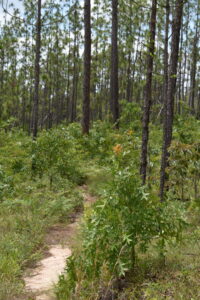
The agency explained that “Torreya State Park was chosen for this designation in part because of the park’s Rock Bluff, a steep, tall, limestone bluff that has been exposed by erosion from the Apalachicola River. Rock Bluff is part of the Torreya Formation and is about 18 million years old. Marine fossils (…) are found in the limestone formations exposed along the Apalachicola River and in the streambeds within the park.”
Palindrome Week
A palindrome is a word, number, phrase, or other sequence of characters which reads the same backward as forward. The first palindrome was written in Latin and traced back to ancient Rome; they have also been found in ancient Sanskrit and Greek. Additionally, palindromes have been found as graffiti in the remains of the city of Herculaneum. Herculaneum was buried in volcanic ash circa AD 79 by Mount Vesuvius, Italy. The last week of February is a week of palindromes: 
